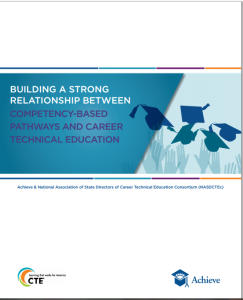Webinar: 2015 Year in Review: State Policies Impacting CTE
Register today for our newest webinar, where you can learn about state CTE policy trends around the country. Join NASDCTEc and the Association of Career and Technical Education on January 21, from 2-3 p.m. ET, as we unpack the findings of our third annual report, “2015 Year in Review: State Policies Impacting CTE,” which will also be released on January 21. Check out our 2014 and 2013 reports as well.
Speakers:
Senator Rollie Heath, Colorado State Senate District 18
Alisha Hyslop, Director of Public Policy, ACTE
Sarah Heath, Assistant Provost for Career and Technical Education, Colorado Community College System
Andrea Zimmermann, State Policy Associate, NASDCTEc
Webinar: Preparing a Globally Competent Workforce Through High-Quality Career Technical Education
And don’t forget to register for next week’s webinar on global competencies and CTE! On January 13, from 3-4 pm ET, NASDCTEc , the Asia Society, Longview Foundation and ACTE are co-hosting a webinar to release our joint publication, “Preparing a Globally Competent Workforce Through High-Quality Career and Technical Education.” Local leaders will share what globally-minded CTE programs look like at the classroom level.
Speakers:
JoAnne Honeycutt, State CTE Director, North Carolina Department of Public Instruction
Larisa K. Schelkin, CEO, President & Founder, Global STEM Education Center, Inc.
Mark Tronicke, Global Exchange Coordinator, Bergen County Academies, New Jersey
Heather Singmaster, Assistant Director, Asia Society
Jennifer Manise, Executive Director, Longview Foundation
Kate Blosveren, Associate Executive Director, NASDCTEc
Steve DeWitt, Deputy Executive Director, ACTE





